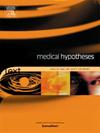纤毛基因变异是反复流产的重要遗传原因:假设
IF 0.8
4区 医学
Q3 MEDICINE, RESEARCH & EXPERIMENTAL
引用次数: 0
摘要
遗传因素是复发性妊娠丢失(RPL)病因的一个重要方面。初级纤毛是细胞表面的毛状感觉结构,在胚胎发育过程中起着至关重要的作用。我们推测夫妻间纤毛基因的隐性变异可能是导致RPL的重要遗传原因。我们的理由如下:首先,纤毛中有数百个基因编码结构或调节蛋白以维持其正常形态和功能,这些基因中的任何一个缺失都可能影响早期胚胎发育;其次,在现有研究中,利用RPL三家族全外显子组测序(WES)鉴定的候选基因中,纤毛基因占主导地位;第三,纤毛基因敲除小鼠模型显示胚胎纤毛存在各种可能导致妊娠丢失的缺陷。为了验证这一假设,基于RPL夫妇及其整倍体流产队列的WES可以确定纤毛基因的潜在致病变异,以验证疾病-基因关联。通过基因本体分析,期望在候选基因中富集纤毛基因。此外,携带临床相关变异的流产石蜡固定胎盘组织的免疫荧光染色可用于观察胚胎纤毛缺陷,以建立基因型-表型相关性。本研究结果可能促进与RPL相关的纤毛基因面板的建立,从而促进RPL的精准医学,如对复发性植入失败患者进行植入前遗传学筛查。本文章由计算机程序翻译,如有差异,请以英文原文为准。
Variants in ciliary genes are an important genetic cause of recurrent pregnancy loss: A hypotheses
Genetic factor is an important aspect of the etiology of recurrent pregnancy loss (RPL). Primary cilium is a cell surface and hair-like sensory structure that plays a crucial role during embryonic development. We hypothesize that the recessive variants of ciliary genes in couples could be an important genetic cause of RPL. Our rationales are as follows: first, hundreds of genes encode structural or regulatory proteins within the cilia to maintain their normal morphology and function, and a deficiency in any of these genes may affect early embryo development; second, ciliary genes are predominant among the candidate genes identified using whole exome sequencing (WES) of family trios with RPL in existing studies; third, knockout mouse models of ciliary genes showed various defects in embryonic cilia that may cause pregnancy loss. To test the hypothesis, WES based on a cohort of couples with RPL and their euploid miscarriages can be performed to identify potential pathogenic variants of ciliary genes to validate the disease-gene associations. An enrichment of ciliary gene among the candidate genes is expected by Gene ontology analysis. Furthermore, immunofluorescence staining of paraffin-fixed placenta tissues from miscarriages carrying clinically relevant variants can be used to visualize the defects in embryonic cilia to establish a genotype-phenotype correlation. Findings from this proposed study may promote establishment of a ciliary gene panel associated with RPL, which will facilitate the precision medicine of RPL, such as preimplantation genetic screening for patients with recurrent implantation failure.
求助全文
通过发布文献求助,成功后即可免费获取论文全文。
去求助
来源期刊

Medical hypotheses
医学-医学:研究与实验
CiteScore
10.60
自引率
2.10%
发文量
167
审稿时长
60 days
期刊介绍:
Medical Hypotheses is a forum for ideas in medicine and related biomedical sciences. It will publish interesting and important theoretical papers that foster the diversity and debate upon which the scientific process thrives. The Aims and Scope of Medical Hypotheses are no different now from what was proposed by the founder of the journal, the late Dr David Horrobin. In his introduction to the first issue of the Journal, he asks ''what sorts of papers will be published in Medical Hypotheses? and goes on to answer ''Medical Hypotheses will publish papers which describe theories, ideas which have a great deal of observational support and some hypotheses where experimental support is yet fragmentary''. (Horrobin DF, 1975 Ideas in Biomedical Science: Reasons for the foundation of Medical Hypotheses. Medical Hypotheses Volume 1, Issue 1, January-February 1975, Pages 1-2.). Medical Hypotheses was therefore launched, and still exists today, to give novel, radical new ideas and speculations in medicine open-minded consideration, opening the field to radical hypotheses which would be rejected by most conventional journals. Papers in Medical Hypotheses take a standard scientific form in terms of style, structure and referencing. The journal therefore constitutes a bridge between cutting-edge theory and the mainstream of medical and scientific communication, which ideas must eventually enter if they are to be critiqued and tested against observations.
 求助内容:
求助内容: 应助结果提醒方式:
应助结果提醒方式:


